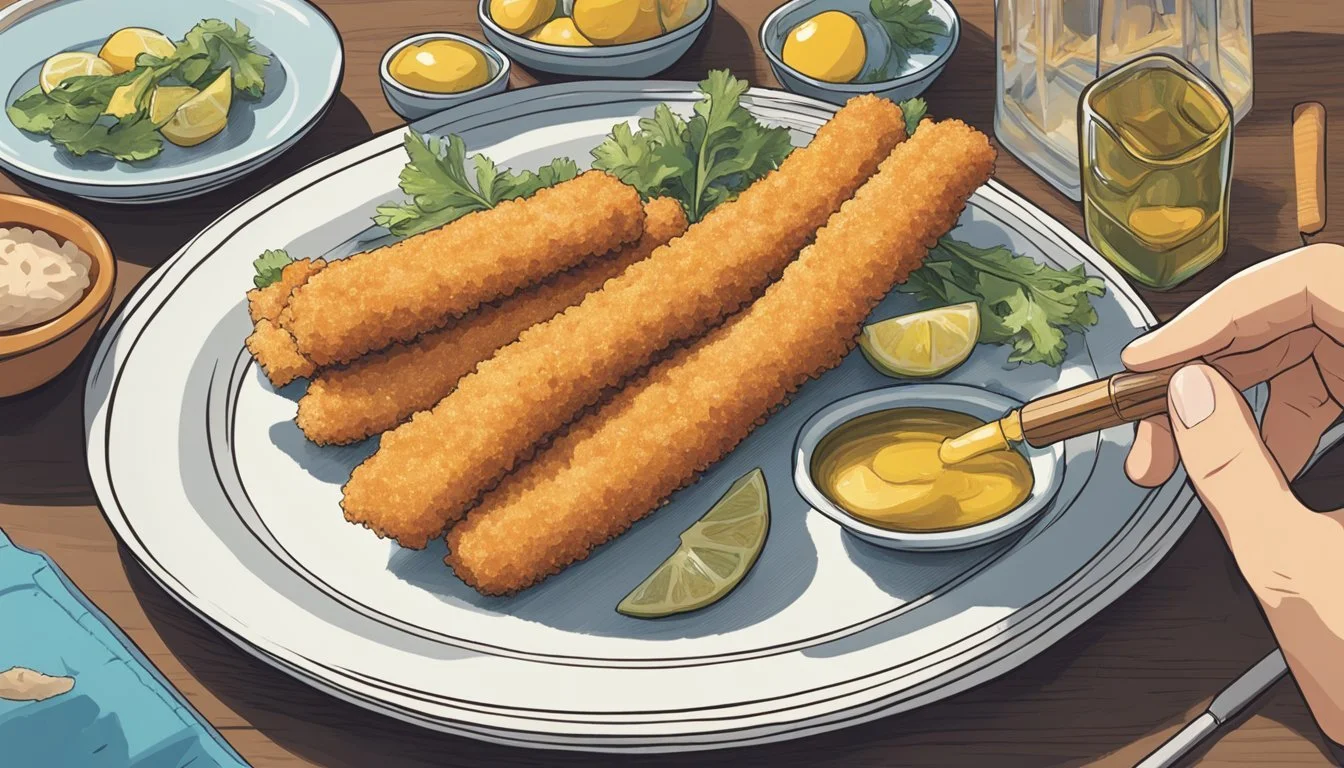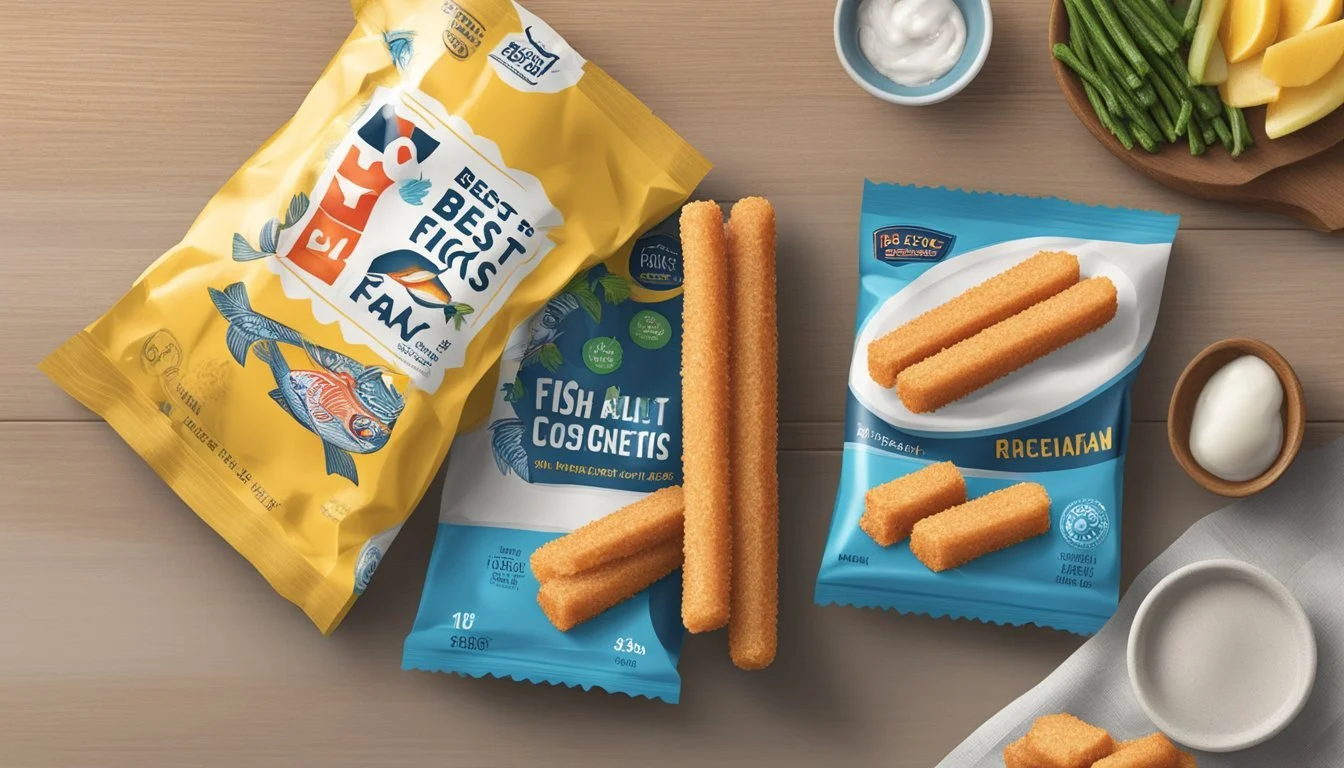How Long Does Fish Sticks Last?
Storage Tips and Shelf Life Explained
Fish sticks are a popular and convenient meal option, but knowing their shelf life is crucial for maintaining quality and safety. Uncooked fish sticks can be kept safely in the fridge for up to 2 days, while cooked fish sticks can last up to 4 days if properly refrigerated. This concise information helps you avoid food waste and ensure you're consuming fish sticks when they are at their best.
When it comes to frozen fish sticks, the shelf life extends even further. Properly stored, frozen breaded fish sticks can retain their best quality for about 18 months in the freezer. It's worth noting, however, that the quality may start to decline after three months, particularly for fish that is more oily or fatty.
By understanding these guidelines, you can make informed decisions about how long to store fish sticks to enjoy them at peak freshness while ensuring food safety. Whether you prefer your fish sticks baked or fried, knowing their shelf life can enhance your meal planning and reduce the risk of spoilage.
Understanding Fish Sticks
Fish sticks, also known as fish fingers, are a popular convenience food often made from various types of breaded fish. They are loved for their ease of preparation and versatility in meals.
Types of Fish in Fish Sticks
Fish sticks are typically made using white fish due to its mild flavor and flaky texture. Commonly used fish include cod, pollock, and haddock.
Cod is favored for its firm texture and subtle taste, making it a popular choice among consumers.
Pollock is another common type due to its availability and cost-effectiveness. It has a slightly stronger flavor compared to cod but remains mild enough to be enjoyed by many.
Haddock offers a sweet, moist bite which is distinct yet not overwhelming, making it another excellent option. Each type of fish varies in fat content, with cod and pollock being leaner, while haddock contains slightly more fat.
Common Ingredients and Preparation
The primary components of fish sticks include fish fillets, breading, and seasoning. The fillets are often cut into uniform strips and then coated with a mixture of breadcrumbs, flour, and herbs.
Typical ingredients for breading may include:
Breadcrumbs
Cornmeal
Seasoning (salt, pepper, paprika)
Some recipes use an egg wash to ensure the breading adheres properly to the fish fillets. After coating, the fish sticks can be baked or fried until golden and crispy.
Proper storage and cooking methods are essential to maintain quality. Uncooked fish sticks should be kept in the freezer to extend their shelf life. Pay attention to packaging and storage to ensure optimal freshness.
Using fresh, quality ingredients ensures the best flavor and texture in every bite.
Storage Fundamentals
Proper storage of fish sticks is crucial to maintaining their quality and safety. Key considerations include optimal freezing conditions and the differences between refrigeration and freezing methods.
Optimal Freezing Conditions
Fish sticks should be kept in the freezer at a temperature of 0°F (-17.8°C) or below. This halts bacterial growth and preserves the fish's quality. Frozen fish sticks can last up to 18 months but are best consumed within six months to maintain optimal taste and texture.
To avoid freezer burn, use airtight containers or freezer bags. Ensure all air is squeezed out before sealing. Fish sticks should not be stored near items with strong odors, as fish can absorb unwanted flavors. By following these guidelines, one can ensure that fish sticks retain their quality for a longer duration.
Refrigeration vs. Freezing
When refrigerating fish sticks, maintain a temperature at or below 40°F (4°C). This method is suitable for short-term storage, typically up to two days for uncooked fish sticks and four days for cooked ones. An air-tight container or tightly sealed plastic wrap will help prevent moisture loss and odor absorption.
Freezing offers a longer shelf life and is ideal for those who want to keep fish sticks for a few months. Both cooked and uncooked fish sticks fare well in the freezer. However, it's essential to monitor the storage duration to ensure freshness. Always label containers with the date of freezing for easy tracking.
Quality Preservation
Preserving the quality of fish sticks involves proper packaging and storage techniques to prevent freezer burn and extend their shelf life effectively.
Avoiding Freezer Burn
Freezer burn occurs when fish sticks are exposed to air, leading to dehydration and oxidation.
To avoid this, fish sticks should be stored in airtight containers or vacuum-sealed bags. These methods help maintain moisture and prevent air exposure.
Regularly checking the freezer temperature is also crucial. Keeping it at 0°F (-18°C) or lower ensures that the fish sticks remain frozen solid and retain their quality.
Labeling packages with dates helps consume older stock first, ensuring freshness. Keeping the freezer organized can also help minimize the exposure of fish sticks to changing temperatures.
Packaging Techniques for Freshness
Using proper packaging techniques is essential to maintain the freshness of fish sticks. Vacuum sealing is one of the best methods. This technique removes air and provides an airtight environment.
If a vacuum sealer is not available, using multiple layers of plastic wrap or aluminum foil can help. These should be tightly sealed, and then placed in high-quality, zip-top freezer bags.
Pre-freezing fish sticks on a baking sheet before packaging can help them keep their shape and prevent them from sticking together. Proper packaging not only extends shelf life but also helps in preserving the fish sticks' texture and flavor.
Safety and Consumption
When it comes to fish sticks, both storage and handling practices play a crucial role in ensuring safety and optimal taste. Knowing how to identify signs of spoilage can prevent food poisoning and other illnesses.
Identifying Spoilage Signs
Proper identification of spoilage is essential for safe consumption. Fresh fish sticks should exhibit a firm texture and a mild scent typical of fresh seafood. Indicators of spoilage include:
Slimy texture: If fish sticks feel sticky or slimy, this can signify bacterial growth.
Off or sour smell: A strong fishy or sour odor is an unmistakable sign of spoilage.
Discoloration: Any brown or yellow spots on fish sticks point to deterioration.
Consuming spoiled fish sticks can lead to foodborne illnesses like food poisoning. It's advisable to discard any fish sticks that display these spoilage signs.
Food Safety and Handling Practices
Adhering to proper food safety practices is vital for avoiding bacterial growth and ensuring fish sticks remain safe to eat. Uncooked fish sticks should be stored in a refrigerator at 40°F (4°C) or below and consumed within two days.
Cooked fish sticks can remain safe for up to four days in the refrigerator.
Freezing can extend shelf life for fish sticks up to six months, but quality may decline after three months.
Food handling practices: To maintain safety, avoid cross-contamination by keeping cooked and raw fish separate. Use clean utensils and wash hands thoroughly before and after handling fish sticks. Following these practices helps ensure the best quality and taste while minimizing the risk of foodborne illnesses.
Life Span of Fish Sticks
Fish sticks can last a significant amount of time when stored properly, but their shelf life varies based on whether they are frozen or refrigerated. Understanding the optimal storage methods helps maintain their quality and safety.
Frozen Fish Sticks Shelf Life
Frozen breaded fish sticks, when kept continuously at a temperature of 0°F (-17.8°C) or lower, can maintain their best quality for about 18 months. Beyond this period, they are still safe to eat but may experience a decline in flavor and texture.
Proper storage conditions are key. Keeping the freezer at a consistent temperature and ensuring the packaging is airtight will prevent freezer burn and maintain peak quality. It's recommended to consume them within six months to ensure optimal freshness.
Refrigerated and Cooked Fish Sticks Expiry
Uncooked fish sticks can be kept in the refrigerator at 40°F (4°C) or below for up to 2 days. Cooked fish sticks, on the other hand, can last up to 4 days when stored properly in the refrigerator.
For the best quality, cooked fish should be consumed within three to four days. If not eaten within this time frame, it's advisable to freeze the leftovers to extend their shelf life. Freezing cooked fish sticks will keep them safe and in good quality for up to three months.
Preparation and Cooking Tips
Proper preparation and cooking of fish sticks ensure that they remain delicious and maintain their quality. Here, specific guidelines are provided on thawing, refreezing, and cooking to achieve the best results.
Thawing and Refreezing Guidelines
Fish sticks should be kept frozen until ready to cook. Thawing them before cooking is not necessary and can lead to soggy and uneven cooking.
If fish sticks have been thawed, refreezing is not recommended as it may cause a deterioration in texture and promote freezer burn. To avoid this, consider cooking the fish sticks directly from the freezer.
Additionally, minimize temperature fluctuations by ensuring they are stored at a consistent freezer temperature to maintain their quality.
Achieving Optimal Cooking Results
Cooking fish sticks properly is key to achieving a crispy, golden brown exterior. Preheat the oven to 425°F (220°C) for best results.
Place the fish sticks on a baking sheet lined with aluminum foil to allow for even cooking. Bake for 12-15 minutes, keeping an eye on them to prevent overcooking.
For a more crispy texture, consider using an air fryer, which can also reduce cooking times. Reheating should be done in the oven at 350°F (175°C) for about 10 minutes to avoid sogginess.
Following these steps helps in maintaining the quality and appearance of the fish sticks, ensuring they remain appetizing and flavorful.
Additional Considerations
When deciding how long fish sticks last, it’s important to consider brand and variety selection, as well as their nutritional information and health impacts. Each factor can affect freshness, taste, and health benefits.
Selecting Brands and Varieties
Different brands offer varying quality of fish sticks. More reputable brands often use higher quality fish and better preservation techniques. When shopping, look for brands that are known for their seafood products and sustainability practices.
The type of fish used is crucial. Lean fish varieties tend to last longer compared to oily ones. Read labels carefully to see what kind of fish is used—cod, haddock, and pollock are common in fish sticks.
Consider taste and your dietary needs. Some fish sticks are seasoned, while others are plain, allowing more versatility in meal preparation. Opt for products with minimal additives and preservatives to ensure a fresher and healthier choice.
Nutritional Information and Health Impacts
Fish sticks can be part of a healthy diet if chosen wisely. Check the fat content, especially for those mindful of their caloric intake. Lean fish varieties are preferable as they are lower in fat.
Pay attention to protein levels. Fish sticks are a good source of protein, essential for muscle maintenance and growth. A higher protein content often indicates better quality fish.
Beware of added ingredients. Some fish sticks may contain high levels of sodium, preservatives, or unhealthy fats. For a healthier option, select fish sticks with simple ingredients and minimal processing.
Nutritional content can vary significantly across brands. Those from the seafood counter tend to be fresher and less processed compared to frozen or canned fish sticks. Always check the label for detailed nutritional information to make an informed choice.









